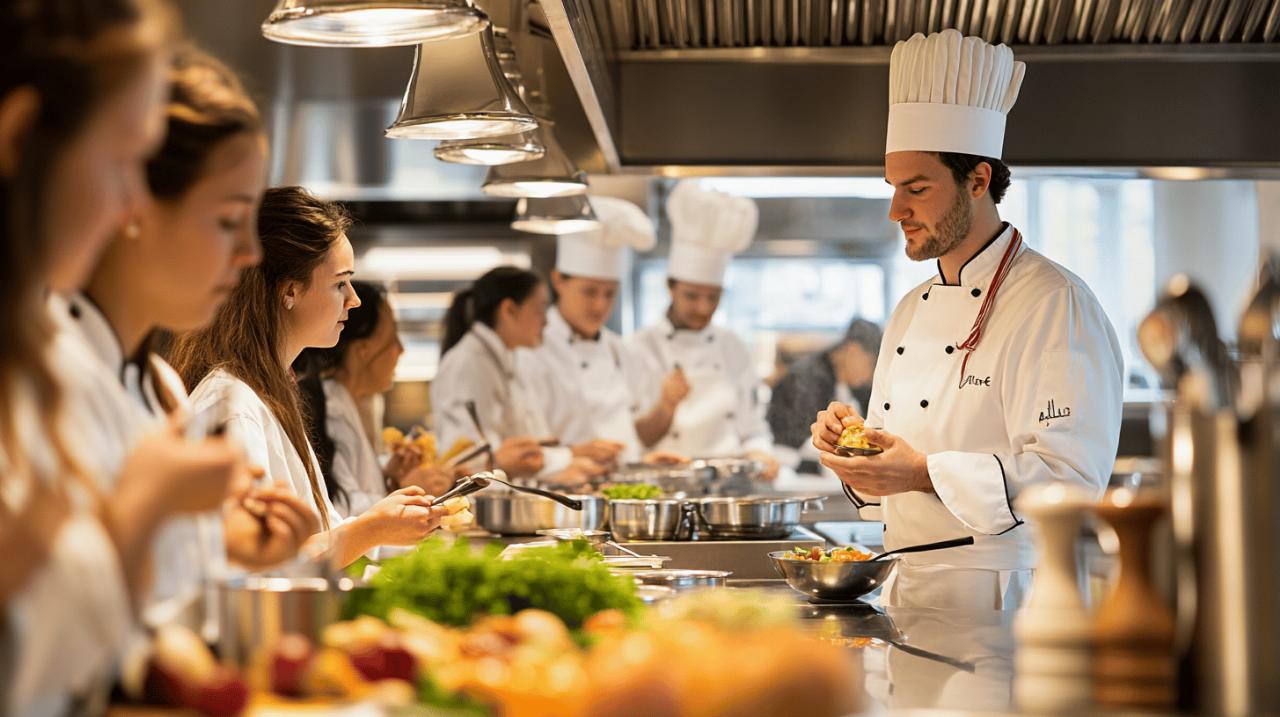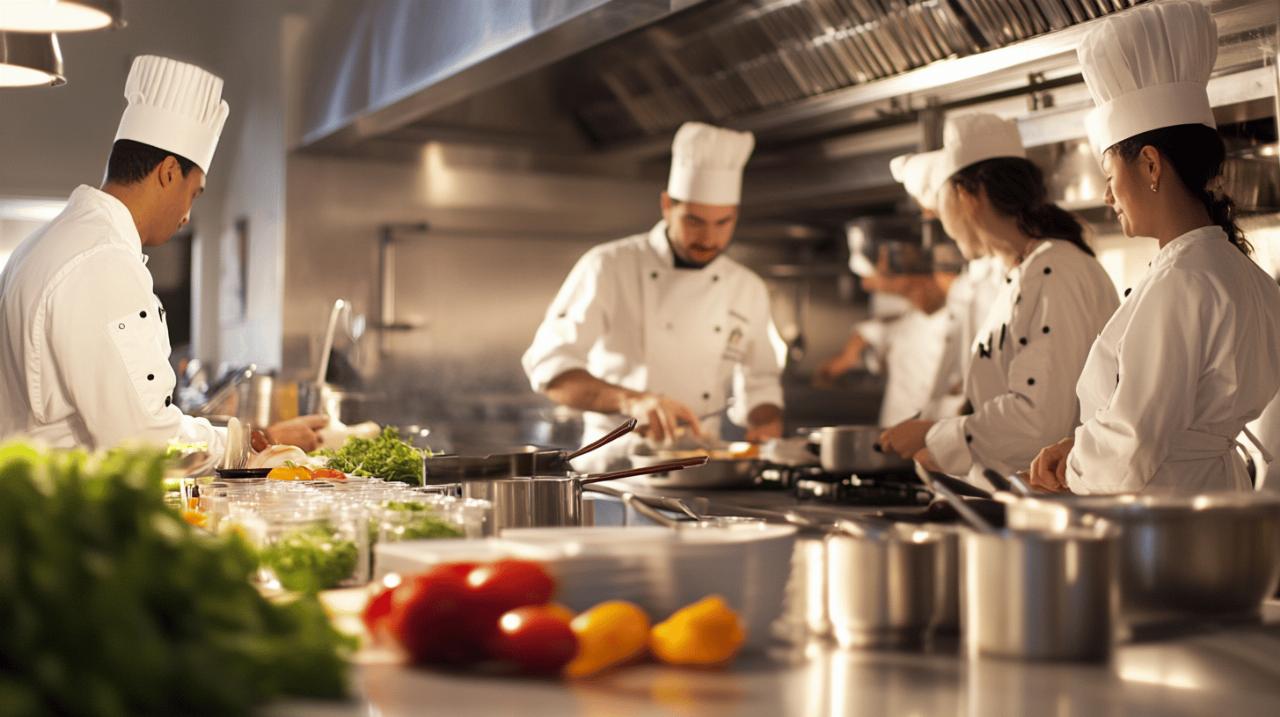Elevate your dishes: maitriser les arts culinaires through perfect plating
The art of culinary presentation has evolved significantly over the years, transforming dining experiences across the globe. Beyond taste, the visual appeal of a dish can elevate the entire gastronomic journey, making it not just a meal but a memorable event. In today's competitive restaurant scene, mastering the delicate balance between flavour and presentation has become essential for chefs looking to make their mark in the industry.
Foundational culinary skills for aspiring chefs
Before one can create visually stunning plates worthy of fine dining establishments, aspiring chefs must first develop a solid foundation in basic culinary techniques. The journey towards mastering the arts culinaires begins with understanding the science behind cooking and the principles that govern flavour development. French cuisine, renowned worldwide for its sophistication and attention to detail, offers excellent groundwork for those looking to excel in the culinary world.
Mastering essential knife techniques and food safety
Precision knife skills form the cornerstone of professional food presentation. The ability to execute uniform cuts not only ensures even cooking but also creates visual harmony on the plate. Chefs at esteemed restaurants like Cocody in Houston demonstrate how meticulous attention to detail begins with proper knife handling. Safety practices are equally important, as they protect both the chef and the integrity of the ingredients being prepared. A chef with exceptional knife skills can transform ordinary ingredients into components that contribute significantly to the overall aesthetic appeal of a dish.
Exploring basic cooking methods and flavour principles
Understanding various cooking techniques—from sautéing to braising—allows chefs to manipulate textures and flavours that will eventually come together on the plate. The principles of balance in taste (sweet, sour, salty, bitter, umami) directly translate to visual balance in presentation. At Cocody, Chefs Lionel Debon and David Denis expertly demonstrate this relationship through dishes like their Seared Foie Gras, which is artfully plated with poached pears, black currant sauce, and house-made gingerbread—creating a harmonious blend of flavours that is reflected in its thoughtful presentation.
The path of professional culinary education
While natural talent plays a role in culinary success, structured education provides the technical knowledge and practical experience necessary to excel in professional kitchens. For those serious about mastering the art of plating and food presentation, formal training offers immense value and opens doors to prestigious opportunities.
Navigating catering college programmes and certifications
Catering colleges offer comprehensive curricula that cover everything from basic food preparation to advanced plating techniques. These programmes typically include courses on colour theory, visual composition, and the psychological aspects of food presentation—all crucial elements for creating dishes with strong visual appeal. Students learn that white plates, for instance, often serve as the ideal canvas for showcasing colourful French cuisine, allowing each element to stand out while maintaining a cohesive overall appearance. Certifications from respected culinary institutions add credibility to a chef's portfolio and demonstrate a commitment to the craft.
Balancing culinary theory with practical kitchen experience
Theoretical knowledge must be complemented by hands-on practice in real kitchen environments. Many culinary programmes incorporate placements in restaurants where students can observe how seasoned chefs approach plating. The Chilean Sea Bass served at Cocody exemplifies this balance between theory and practice—placed atop jasmine rice with cilantro velouté, the dish showcases textural contrasts and height variation that can only be mastered through practical experience. Working in active kitchens also teaches aspiring chefs about timing and efficiency, essential skills when creating visually stunning plates in a fast-paced restaurant setting.
Developing expertise through specialisation
As chefs progress in their careers, many choose to specialise in particular aspects of culinary arts to distinguish themselves in the competitive food industry. Specialisation allows for deeper exploration of specific techniques and styles, ultimately contributing to a chef's unique signature approach to plating.
Finding your culinary niche: from pastry arts to global cuisines
Some chefs gravitate towards pastry arts, where precision and visual appeal are paramount. Others might focus on specific global cuisines, such as French culinary traditions, which place tremendous importance on presentation. At Cocody, the menu reflects this specialised approach through items like their elegantly designed Lollys, which balance sophisticated presentation with functionality, making them both beautiful and easy to share. Specialisation enables chefs to become authorities in their chosen area, developing distinctive plating styles that become part of their professional identity.
Building a Distinguished Portfolio of Signature Techniques
Experienced chefs develop a repertoire of signature plating techniques that define their artistic vision. These might include distinctive ways of applying sauces, creative use of negative space, or innovative approaches to garnishing. Successful plating requires a thoughtful consideration of composition, contrast, layering, and height—principles evident in Cocody's approach to French cuisine. Over time, these techniques become refined through practice and experimentation with seasonal ingredients, allowing chefs to create plates that are not just visually appealing but also reflective of their personal culinary philosophy.
Growing your culinary career beyond training
 Culinary mastery is a lifelong journey that extends well beyond formal education. Professional growth requires continuous learning, adaptation to emerging trends, and active participation in the broader culinary community. As chefs advance in their careers, their approach to plating often evolves, incorporating new inspirations while staying true to fundamental principles.
Culinary mastery is a lifelong journey that extends well beyond formal education. Professional growth requires continuous learning, adaptation to emerging trends, and active participation in the broader culinary community. As chefs advance in their careers, their approach to plating often evolves, incorporating new inspirations while staying true to fundamental principles.
Expanding Your Network in the Professional Food Community
Building relationships within the culinary world opens doors to collaboration, mentorship, and inspiration. Attending industry events, participating in chef exchanges, and engaging with food enthusiasts on various platforms can provide fresh perspectives on plating techniques. Successful restaurants like Cocody in Houston (located at 1971 W Gray St) have built reputations not just through their food but also through community engagement and distinctive dining experiences. Their operating schedule—Tuesday through Saturday from 11am to 3pm and 5:30pm to late evening, with Sunday brunch hours—allows them to maintain quality while serving their community consistently.
Embracing lifelong learning through competitions and workshops
Culinary competitions challenge chefs to elevate their plating skills under pressure, often pushing them to new creative heights. Similarly, specialised workshops offer opportunities to learn from masters in specific aspects of food presentation. Inspiration for innovative plating can come from diverse sources—nature, art, cultural traditions—and staying open to these influences keeps a chef's work fresh and relevant. The commitment to continuous improvement is evident in restaurants that regularly update their menus to showcase seasonal ingredients while maintaining their distinctive plating aesthetic, creating dining experiences that are both visually stunning and gastronomically satisfying.
The Art of Plating: Transforming Food into Visual Masterpieces
Plating is a fundamental aspect of French cuisine that transforms ordinary dishes into extraordinary visual masterpieces. At Cocody, a unique restaurant in Houston, plating is not merely an afterthought but an essential element of the dining experience. Chefs Lionel Debon and David Denis demonstrate meticulous attention to detail, creating plates that delight the eyes before satisfying the palate.
The artistry of food presentation establishes visual appeal and sets expectations for the flavours to come. Take, for instance, Cocody's Seared Foie Gras, artfully arranged with poached pears, black currant sauce, and house-made gingerbread—a stunning composition that enhances each bite, making it more pleasurable and memorable.
Creating Balance and Composition with Seasonal Ingredients
Mastering the art of plating requires understanding several key principles. Balance and composition form the foundation of visually appealing dishes. Chefs must consider colour, texture, focus, and negative space when arranging elements on the plate. Seasonal and local ingredients are favoured not only for their freshness and flavour but also for their vibrant appearance.
At Cocody, the Chilean Sea Bass exemplifies these principles, served atop jasmine rice with cilantro velouté. The dish showcases how functionality can harmonise with aesthetics. Similarly, their Lolly's are designed to be both elegant and shareable, demonstrating that practical considerations need not compromise visual impact.
Elevating fine dining experiences through culinary aesthetics
Plate selection plays a crucial role in culinary presentation, with white plates often recommended to showcase the colours and textures of the food. Precision and attention to detail elevate a good dish to an unforgettable fine dining experience. Each element on the plate should serve a purpose, from sauces artfully drizzled to carefully placed garnishes and edible accents.
Inspiration for plating can be drawn from nature and art, with chefs like those at Cocody applying both creative vision and technical skill to their presentations. The restaurant, located at 1971 W Gray St, Houston, TX 77019, offers guests this elevated dining experience Tuesday through Sunday, with varying hours for both the restaurant and bar. For those wishing to experience this culinary artistry firsthand, booking is recommended to secure a table at this popular fine dining establishment.
